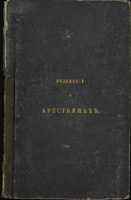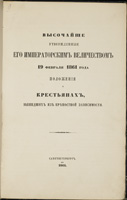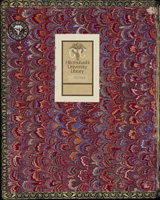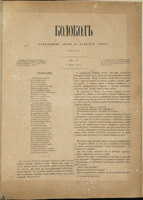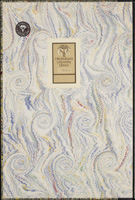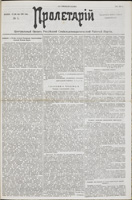The Bernstein-Souvarine Collection
This collection is composed of books assembled by two Russian refugees in Paris, Leon Bernstein (1877-1962) and Boris Souvarine (1895-1984). It contains approximately 1,900 books on the Russian social movements from 19th century to early 20th century, and embraces many works of Chernyshevskii, Herzen, Lenin, Bukharin, Stalin, Trotskii, etc.
Literature
- 細谷新治「ベルンシュタイン=スヴァーリン文庫(1)」、『鐘』第5号、1980年
- 細谷新治「ベルンシュタイン=スヴァーリン文庫(2)」、『鐘』第6号、1981年
- 細谷新治「ベルンシュタイン=スヴァーリン文庫(3)」、『鐘』第7号、1981年
Emancipation Manifesto
Положения о крестьянахъ, вышедшихъ изъ крепостной зависимости
(Bernstein:60)
Publication details
Положения о крестьянахъ, вышедшихъ изъ крепостной зависимости
Publisher: Санктпетербургъ, [s.n.]
Publication Date: 1861
Physical Description: 1 v. (various paging) ; 36 cm
Language: Russian
Explanation
The Tsar’s Edict of February 19, 1861, “Regulations Concerning Peasants Leaving Serf Dependency" is the text known as the Emancipation Manifesto. Signed by Alexander II, Tsar of Russia, it was promulgated on March 5, 1861. Defeat in the Crimean War clearly showed the backwardness of Russia in technology and economy. Dissolution of serfdom was an urgent matter because it interfered with the development of a capitalist basis to agriculture. As the time for the serfs to be liberated drew near, the aristocrats were shaken, but the Tsar declared that the problem had to be dealt with sooner or later and that it was more desirable to begin at the top than at the bottom. He then took a leading part in the reform with his officials. This Manifesto of 1861 had its limitations because peasants had to pay a large sum to be emancipated and because they would continue to be tied to the community (Mir) even after emancipation. Despite such inadequacies, the peasants were thus legally liberated. The CHSSL copy was published as a folio in 1861 in Saint Petersburg.
Kolokol
Колоколъ
(Bernstein-Souvarine:65)
Publication details
Колоколъ : прибавочные листы къ Полярной звезде
Publisher: London :Вольная русская типограФия
Publication Date: 1857-1865
Physical Description: 1 v. ; 33 cm
Notes: English title added: The bell (<листь 2 (августа 1857)>-)
Library has No. 1 (июль 1857)- No. 196 (апр. 1865)
Language: Russian
Explanation
“Kolokol" is a Russian word meaning “bell." This periodical was published in 1857 by two Russian refugee writers, Alexander Herzen and Nikolai Ogaryov. Its name has its origin in the bell announcing convocation of the popular assembly (Veche) held in the medieval Russian self-governing city of Novgorod. In the fifteenth century the Bell of Veche was carried away by Ivan III to Moscow, and its ringing would no longer be heard. To Herzen, it was a symbol of the freedom that Russia had to get back. A legend had it that Novgorod was one of the oldest cities in Russia and that it had enjoyed freedom as a republican city-state until Ivan III integrated it within his despotic tzarism. The London edition of Kolokol ceased publication in 1867. The Geneva edition started publication in the following year but stopped in less than a year. The CHSSL has numbers 1 to 196 (published in 1865), complete except for some supplements.
Proletarii
Пролетарiй
(Bernstein:754)
Publication details
Пролетарiй : центральный органъ россiйской соцiальдемократической рабочей партiи = Le Prolétaire
Publisher: Женева : Тип. Партiи
Publication Date: 1905-
Physical Description: v. ; 45 cm
Notes: Library has No. 1 (27(14) мая 1905 г.)- No. 26 (25(12) ноя 1905 г.)
Language: Russian
Explanation
In the Bernstein-Souvarine Collection there are over one hundred books and periodicals on Lenin, including 30 copies of first editions of books written by him. Among them the complete sets of Iskra (meaning “spark"), Vpered (“forward") and Proletarii, newspapers founded by him, are very rare. Proletarii was published from May 1905 as the central bulletin of the Russian Social Democratic Labor Party, when Lenin had retaken leadership at the third congress of the Party in 1905. Its first issue was printed abroad and brought into Russia. Twenty-six issues in all were published weekly until November 1905. Including almost sixty editorials written by Lenin, the paper is full of invective against the Mensheviks. Like Iskra and Vpered, it bears witness to the factional strife between the Bolsheviks and the Mensheviks inside the Russian Social Democratic Labor Party.
